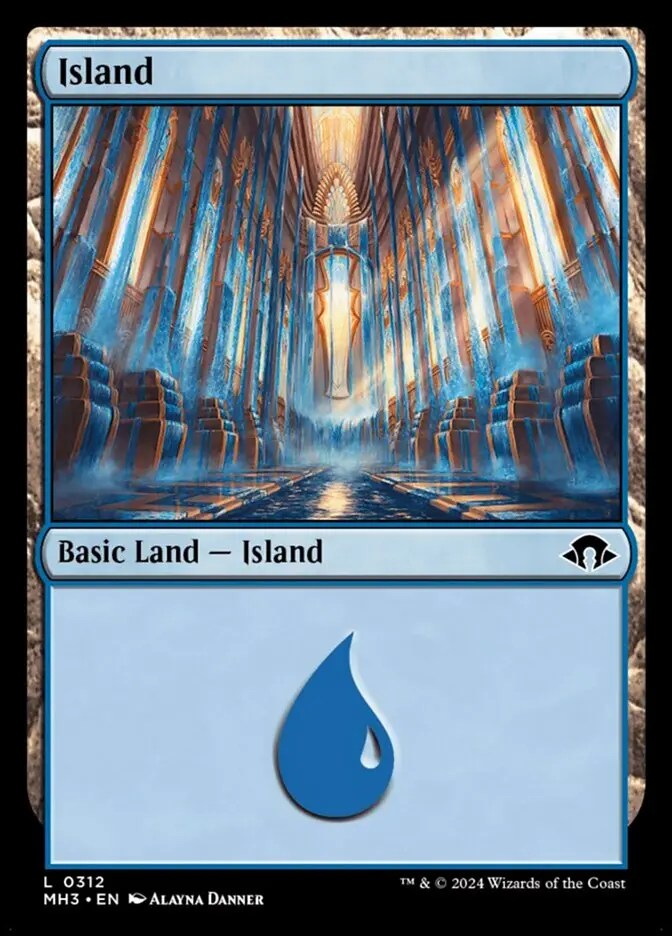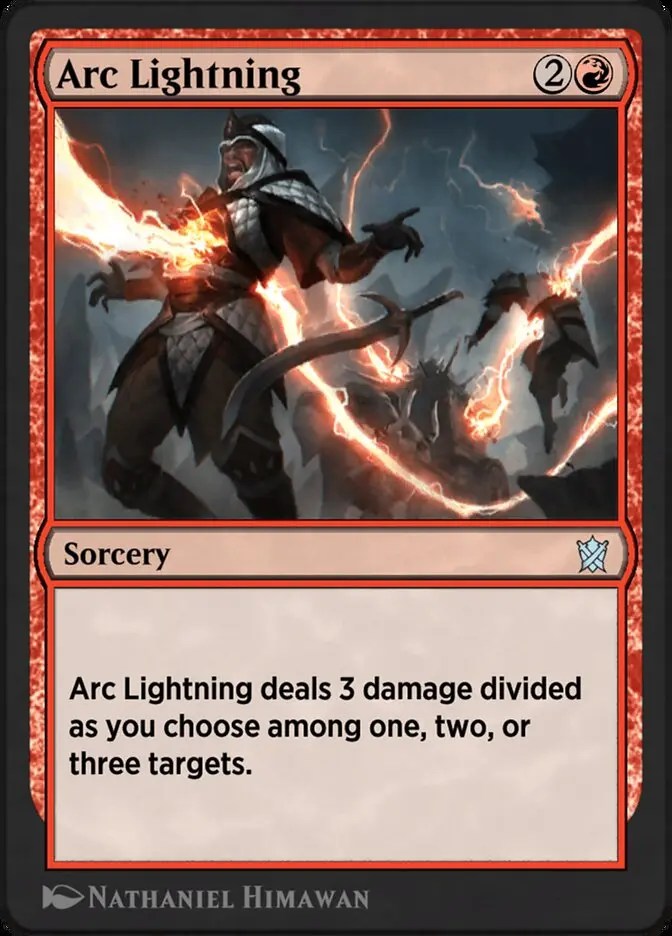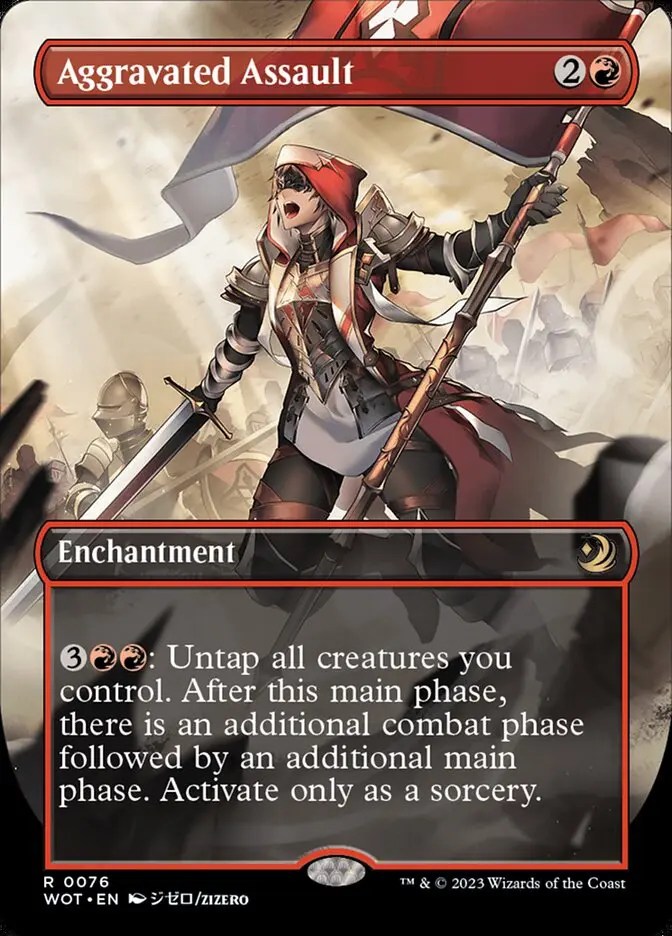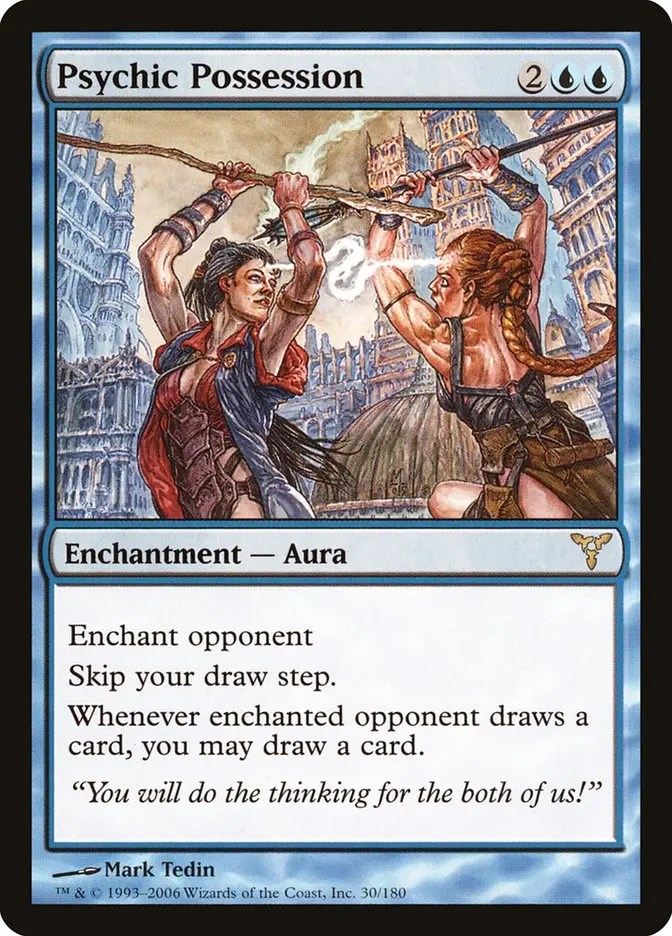The turn structure of Magic: The Gathering is one of the many key features that set it apart from other TCGs. There are five turn phases within MTG, each with its own steps and restrictions that players must follow. When it isn’t their turn, players can react to their opponents’ spells or trigger abilities that have the potential to drastically change the board. Oftentimes, it can feel like “your” turns aren’t entirely yours– especially when playing against those pesky Control decks.
This guide will detail the who, what, and when of each phase so that you know what can and can’t be done as both an Active and Non-Active Player.
Table of contents
Two important terms in MTG
Before we dive into the intricacies of each phase of a turn, let’s go over a couple of terms that will make the rest of this guide easier to understand.
Active Player priority
Each turn, the Active Player priority is passed to the player whose turn it is. An easy way to think about Active Player priority is that the Active Player has the “right-of-way.” In MTG, we refer to this prioritization as APNAP (Active Player, then Non-Active Player). The Active Player’s actions or triggers during their turn are the first to be included on the Stack, followed by the responses and triggers of the Non-Active Players. Priority is passed in this order through all phases of the turn.
The Stack
The Stack is often referred to as the most complicated aspect of MTG—I won’t argue with that; it deserves an entire guide of its own. But to understand the various turn phases and steps in MTG, a baseline comprehension of the Stack is all that is necessary.
- The Stack is a persistent zone that isn’t physically represented on the board.
- The Stack’s duty is to maintain the order of the actions so that spells are resolved appropriately. You could think of the Stack as the Order of Operations in math.
- Active Player priority is an important part of determining how the Stack resolves spells and abilities.
- Imagining the Stack as a literal stack of the spell cards and abilities played each turn helps simplify the resolution process.

Beginning Phase
Untap step
Priority: No players are given priority during this step
Active Player: ‘Phasing’ abilities are triggered. Permanents are either phased out or in during this step.
Game state: The Day/Night cycle introduced by the Innistrad: Midnight Hunt set is resolved if active within the game.
- Day becomes Night if the previous player didn’t cast any spells.
- If the previous player had cast two or more spells, then Night becomes Day.
Active Player: Permanents controlled by the Active Player are untapped simultaneously (unless abilities or active effects explicitly prevent this).
Upkeep step
The Stack: Triggers that occurred during the Untap step or at the start of the Upkeep step are added to the Stack and resolved accordingly.
Priority: The Active Player is given priority after the initial triggers are resolved on the Stack.
Active Player: Can cast instant-speed spells. Any controlled cards with ‘cumulative upkeep’ costs must be resolved.
Non-Active Players: Can respond to the Stack and the Active Player’s actions with instant-speed spells.

Draw step
The Stack: Triggers that occur when the Draw step begins are added to the Stack and resolved accordingly.
Priority: The Active Player is given priority after the initial triggers are resolved on the Stack.
Active Player: Draws a card from their library.
The Stack: Any triggers from card draws are added to the Stack and resolved accordingly.
Non-Active Players: Can respond to the Stack and the Active Player’s actions with instant-speed spells.
First (Pre-Combat) Main Phase
The Stack: Triggers that occur upon the start of the First (Pre-Combat) Main Phase are added to the Stack and resolved accordingly.
Priority: The Active Player is given priority after the initial triggers are resolved on the Stack.
Active Player: Can play non-instant spells such as creatures, Sorceries, and Planeswalkers.
Non-Active Players: Can respond to the Stack and the Active Player’s actions with instant-speed spells.
Common plays during this step:
- Playing a Land card (By default, players can play one Land card each turn).
- Playing Sorcery cards or cards that explicitly say ‘only as a Sorcery’ or ‘any time you can cast a Sorcery.’
- Planeswalkers
- Artifacts
- Enchantments



Combat Phase
Priority: Given to the Active Player throughout the entire Combat Phase
Beginning of Combat
The Stack: Triggers that occur upon the start of the Combat Phase are added to the stack and resolved accordingly.
Active Player: Declare which player they wish to attack.
Declare attackers
Active Player: Declare any attacking creatures that are currently untapped. Upon declaring attackers, each creature will become tapped (unless they have the Vigilance keyword ability). All attackers are declared, tapped, and are considered attacking simultaneously.
Active and Non-Active Players: Can play instant-speed spells and respond to the Stack.
Common plays during this step:
- Increasing a creature’s power/toughness with 1/1 counters or other means
- Granting a creature(s) keyword abilities such as Indestructible or Deathtouch.
- Removal spells

Declare blockers
Defending Player: The player being attacked declares any blocking creatures.
Active Player: If the Defending Player assigned multiple creatures to block a single attacker, the Active Player chooses the order in which the blocking creatures are dealt damage.
Common plays during this step:
- Increasing a creature’s power/toughness with 1/1 counters or other means
- Granting a creature(s) keyword abilities such as Indestructible or Deathtouch.
- Removal spells
Combat Damage
First/Double Strike step: Any creature with the First Strike or Double Strike keyword abilities gets a Combat Damage step of their own.
Game State: Afterwards First/Double Strike damage is resolved, and all creatures deal damage simultaneously. Damage done to creatures is resolved first, followed by damage done to players or Planeswalkers either through direct combat or from abilities such as Trample.
Common plays during this step:
- Regeneration effects (Must be activated before combat damage or effects that say ‘destroy’ are resolved.)
End of Combat
Game State: Any dead creatures are moved to graveyards.
The Stack: Any triggers that occur due to damage or death from the Combat Damage step are added to the Stack, followed by ‘End of Combat’ triggers and are resolved accordingly.
Second (Post-Combat) Main Phase
The Second (Post-Combat) Main Phase is nearly identical to the First (Pre-Combat) Main Phase. However, some cards explicitly mention effects that occur during the Post-Combat Main Phase or vice versa.
The Stack: Triggers that occur upon the start of the Second (Post-Combat) Main Phase are added to the Stack.
Priority: The Active Player is given priority after the initial triggers are resolved on the Stack.
Active Player: Can play non-instant spells such as Lands, Sorceries, and Planeswalkers.
Non-Active Players: Can respond to the Stack and the Active Player’s actions with instant-speed spells.
Common plays during this step:
- Spell effects which are based off of damage dealt/taken or life gained this turn.

Ending Phase
End step
Priority: The Active Player has priority throughout the End step.
Game State: All effects that last ‘until the end of turn’ are ended.
The Stack: Triggers that activate ‘at the beginning of your End step’ are added to the Stack and are resolved accordingly.
Active and Non-Active Players: No actions can be taken, but the Stack can be responded to.
Cleanup step
Priority: The Active Player maintains priority throughout the Cleanup step.
Active Player: If the player has more than seven cards they must discard down to seven (unless they have effects in play that allow a greater hand size).
Active and Non-Active Players: No actions can be taken during this step unless an ability triggers and goes onto the Stack.
Game State: After the Stack is fully resolved and all players pass priority, the turn officially ends, and the Active Player status is passed to the next player.
MTG Cards that interact with the turn structure



There are many wacky cards in Magic: The Gathering that can add, remove, or change how turns and the various phases within them operate. It’s important to note that unless these cards say otherwise, any phases that are added process as they normally would, and triggers that occur upon entering said phases will activate a second time.














Published: May 25, 2024 10:03 am